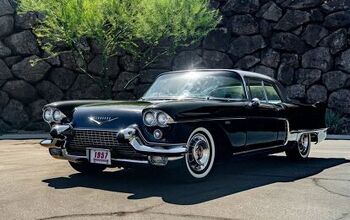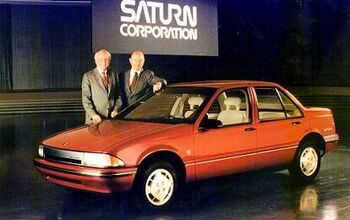Lyft You Up: Rideshare IPO Could Mean Big Payday for GM

Back in 2016, General Motors invested half a billion bucks in Lyft, the rideshare company bent on taking Uber to school. When the deal was made, the companies portrayed it as a long-term strategic alliance. Since then, investments have been made in Lyft by GM’s competitors (namely Ford), and GM has made investments in potential Lyft competitors like Cruise Automation. Pro tip: don’t try to draw this particular family tree.
Today, Lyft went public on the stock market, seeing an astounding open of $87.24 a share. As a gearhead, why should you care about this? Well, remember that investment GM made in the company? The General now owns 18.6 million shares, which now translates into a net value of over $1.5 billion.
In a company besieged by idling plants and layoffs, suddenly finding an extra billion-and-a-half bucks on the books is surely a big deal.
It’s not as if GM can make like a Vegas winner and immediately cash out, however. To my understanding, the company cannot sell its stock for a period of six months after the IPO. Given market and socioeconomic volatility, who knows what Lyft’s stock price will be this autumn. However, some back-of-napkin math reveals that the stock would have to fall to just $26.88 in order for it to be worth less than the $500 million General Motors invested in the company three years ago.
Lyft’s stock is sure to fluctuate wildly over the days and weeks ahead before settling in to something remotely resembling an even keel. Since its IPO this morning, the price has bounced around like a proverbial rubber ball, currently sitting at $80.62 as of this writing. Even if GM eventually sells off some or all of its shares, it is unlikely they’ll sever ties with Lyft entirely.
You know all this has to rankle the corner offices in the Glass House, as Ford’s stock price has been languishing under $10 for ages. So far as they’re concerned, they’ve been innovating and powering their way to a portfolio of desirable vehicles only to see Wall Street reward yet another start-up (ish) company with gonzo valuations. It must be frustrating. For its part, GM stock sits around $37 today.
Keep in mind that GM also has its corporate fingers in the pies called Maven and Cruise Automation, so trying to tease out Lyft’s role in the company’s future plans is like trying to untangle a ball of fishing line that’s been sitting in the bottom of a tackle box for months.
Beyond General Motors, companies like Google (12.8 million shares) and Fidelity (about the same investment as GM) also stand to make a few bucks from Lyft. One thing’s for sure – the line between traditional automakers and new mobility solution companies is quickly being erased.
[Image: Lyft]

Matthew buys, sells, fixes, & races cars. As a human index of auto & auction knowledge, he is fond of making money and offering loud opinions.
More by Matthew Guy
Latest Car Reviews
Read moreLatest Product Reviews
Read moreRecent Comments
- Bd2 Even Lexus is feeling the burn of not being able to compete in the e-ATP arena.
- TheEndlessEnigma The pics look great, with this being a manual this is a very enticing listing. The mention of snow tires does have me wondering what the condition of frame/underbody is - as with any car coming from the snowbelt.
- TheEndlessEnigma Let's fix that headline, shall we? "It Turns Out That Car Buyers Aren’t as Hot on EVs as Ford Had Hoped". It's not just Euroweenie car buyers that aren't all lathered up to buy an EV, it's the car buying public in general.
- Dave M. Get rid of anything 4 cylinder. I know a lot can be done with them, but I have occasion daily with luxury cars and whether it's Mercedes, BMW or any other luxury or semi-luxury brand, 4 cylinders (turbo, supercharged) still sound like an economy car.
- Kosmo Resume the CTS V Wagon with 6MT!!!


































Comments
Join the conversation
Hence why the US as a leading place for manufacturing, and for productive enterprise in general, is by now merely an historical anecdote.
Well the stock lost 11% today, thanks Mary for not taking my advice, but I know $150 million is pocket change.